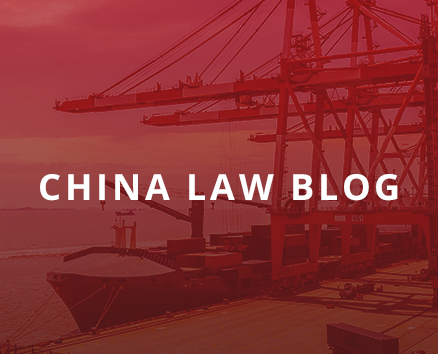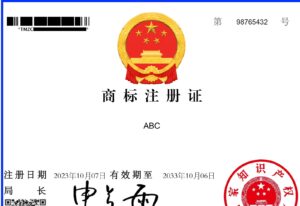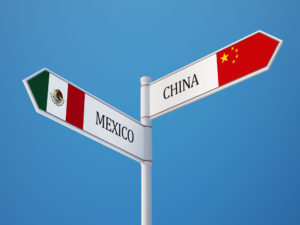Collecting Judgments Against China: Navigating Bilateral Treaties, US Judgments, and International Conventions
In today’s globalized economy, businesses frequently find themselves in transactions spanning multiple countries, with inherent risks of international disputes. When disputes arise with Chinese entities, understanding the process of enforcing and collecting judgments against Chinese companies becomes crucial.
China’s unique legal landscape, coupled with its significant economic influence, means that the inability to enforce a judgment against a Chinese company can have substantial financial implications. This makes it paramount for businesses to have at least passing knowledge of the mechanisms involved in enforcing court judgments against Chinese companies, and to draft their contracts accordingly.
Enforcing judgments against Chinese companies presents unique challenges, largely stemming from the intricacies of international conventions, bilateral treaties, and specific nuances of Chinese law, politics, and governance. But before diving into the issues commonly faced with enforcing judgments against Chinese companies, I will first explore the issues related to enforcing US judgments in Chinese courts.
The Challenge with US Judgments
We have written many times of how Chinese courts rarely enforce United States judgments. Because of this, U.S. judgments against Chinese companies are sometimes of questionable value, and if your only collection plan is to sue in the United States and then take your U.S. judgment to China, you may be making a mistake.
Regrettably, we often encounter U.S. lawyers who, after having billed for and secured a U.S. judgment against a Chinese company for their client, are left grappling with the inability to enforce that judgment against the Chinese company. A United States judgment against a Chinese company can lead to collection, but for that to occur, you usually must know about the operations of the Chinese company and be prepared to be creative in figuring out how and where to act in using the United States judgment to go after the Chinese company’s assets.
However, it’s crucial to note that a U.S. judgment isn’t always void of value and rarely is such a judgment entirely void of value. With knowledge of the operations of the Chinese company and some legal creativity, it’s possible to leverage a U.S. judgment to go after the Chinese company’s assets. But usually, it is best to pursue other collection options against Chinese companies before suing them in the United States.
Since China is not a signatory to any international treaty on recognition and enforcement of foreign court judgments nor is there any treaty between China and the U.S. regarding judgment enforcement, one possible way to get a U.S. judgment enforced in China would be if there were reciprocity between the two countries, but there isn’t.
In considering the question of reciprocity, a Chinese court will consider whether there is any precedent indicating reciprocity. In other words, the court will seek to determine whether there are prior cases where a U.S. court recognized or enforced a Chinese court’s decision. If there are no examples of a U.S. court having enforced a Chinese judgment, the Chinese court will almost certainly rule against enforcing the U.S. judgment because the reciprocity requirement will not have been met. If your judgment comes from a state court in a state that has enforced a Chinese judgment, you have a decent chance of being able to get a Chinese court to enforce your state court judgment. It sometimes makes sense to take a US court judgment from a court without any history of reciprocity in China and convert it to one in a court that does have that history. It is not clear what a Chinese court would do if the Chinese party were smart enough to point out what actually transpired with the judgment.
In 1994, the Dalian Intermediate People’s Court considered a Japanese party’s application to recognize and enforce a Japanese judgment and two rulings. The application was eventually referred to the SPC for guidance and the SPC held that given that there was no multilateral or bilateral treaty governing such matters between China and Japan and given that the two countries had not established reciprocity, the Japanese judgment would not be recognized or enforced by a Chinese court. This case confirms China requires factual reciprocity, not presumed reciprocity.
There are some instances where a United States federal court enforced a Chinese Judgment. On August 12, 2009, the United States District Court for the Central District of California issued a judgment enforcing a $6.5 million dollar Chinese judgment against an American corporate defendant under California’s version of the Uniform Foreign Money Judgments Recognition Act and in 2011, the Ninth Circuit Court of Appeals affirmed the district court’s decision. The plaintiffs in that case were Hubei Gezhouba Sanlian Industrial Co. Ltd. and Hubei Pinghu Cruise Co. Ltd., two PRC companies located in Hubei Province. The plaintiffs won a judgment against Robinson Helicopter Company Inc., a California corporation, at the Higher People’s Court of Hubei Province. The United States District Court for the Central District of California held that the PRC judgment was final, conclusive, and enforceable under PRC laws and the plaintiffs were therefore entitled to an issuance of a domestic judgment in the amount of the PRC judgment.
This was the first time a U.S. Court recognized and enforced a PRC judgment, but it does not necessarily mean a Chinese court will automatically invoke the principle of reciprocity and recognize and enforce a U.S. court judgment. First, the enforcing court in that case is in California (though it was federal court), and the laws usually differ from state to state in the U.S., so it’s uncertain whether a Chinese court will deem the U.S., as a country, to have established a reciprocal relationship with China. Second, since the enforcing court was a federal court, it’s also not clear whether a Chinese court will deem a state court’s judgment enforceable in China. Third, the enforcing court is not the U.S. Supreme Court, thus, a Chinese court may not deem it to amount to reciprocity at the highest judicial level between the two countries. Finally, that case involved a U.S. defendant who had previously argued that only China had jurisdiction over the case, so it hardly could be deemed unfair for a U.S. court to rule on enforcing the Chinese judgment.
In many enforcement of judgment situations, it just is not very clear what Chinese courts will do, and the fact that China does not publish many of its court decisions and does not necessarily value precedent, combine to make it challenging to predict what a Chinese court will do in a particular instance. Nonetheless, if you are facing a judgment enforcement situation, you probably should do the research regarding your particular situation.
Bilateral Treaties and Their Impact
Countries with bilateral treaties with China are in a unique position. These treaties often offer a guiding framework for the recognition and enforcement of judgments.
Our international dispute resolution lawyers regularly work alongside law firms from countries boasting bilateral treaties with China. Together, we weigh several factors in determining how and where to proceed with seeking a judgment or award against the Chinese company, including:
- The nature and stature of the Chinese defendant.
- The money or other issues at stake.
- The prevailing political and economic relations between the relevant countries.
- The cost implications tied to each available legal route.
- The expected success rate of enforcing the judgment.
- The pace at which judgments can be obtained and then enforced.
- The specific location of the Chinese defendant’s assets.
- Past litigation or dispute history between the parties
International Conventions: A Double-Edged Sword
Though China is a signatory to the New York Convention on Recognition and Enforcement of Foreign Arbitral Awards, it is not a signatory to any international treaty on recognition and enforcement of foreign court judgments. There is no bilateral treaty between China and the U.S. on recognition and enforcement of foreign court judgments. There also is no bilateral treaty between the two countries on civil or commercial judicial assistance.
China does have bilateral treaties with a small group of countries that mandate that its courts enforce awards from those treaty countries. But just as is true with respect to arbitration awards China courts should be enforcing, its record on enforcing these judgments is also spotty. Having said this, your company will be better off getting a judgment from one of these treaty countries than from a non-treaty country.
China is a signatory to the Convention on the Recognition and Enforcement of Foreign Arbitral Awards (New York, 1958) (the “New York Convention”). This Convention, now boasting 172 signatory countries, offers a somewhat clear path for enforcing arbitral awards. For arbitration awards from countries party to the New York Convention, there is usually a clearer path to collecting from a Chinese defendant, as opposed to via litigation. Nonetheless, China’s have a long history of rejecting arbitration awards that they should be enforcing.
Strategies for Judgment Collection Against Chinese Companies
Article 282 of China’s Civil Procedure Law, requires all of the following conditions be met for a foreign judgment to be recognized in China:
- The foreign judgment has taken legal effect in the jurisdiction in which it was rendered.
- The country where the deciding court is located has a treaty with China or is a signatory to an international treaty to which China is also a signatory or there is reciprocity between the countries.
- The foreign judgment does not violate any basic principles of Chinese law, national sovereignty, security, or social public interest.
If your judgment meets the above criteria, you should at least consider taking it to China for enforcement. Even if that is not a good option, you may have other options. My law firm’s international dispute resolution attorneys have successfully employed various methods to enforce foreign court judgments against Chinese entities. The below are some of the methods we use to try to collect on judgments against Chinese companies that do not have hard assets in the country where our client is located.
- If the Chinese company has vessels, seize those in the right country. Not likely, but I mention it because it can be surprisingly easy. South Korea can be great for this.
- If there are U.S. or EU (and other countries’) companies that owe the Chinese company money, go after that money. It often is faster, cheaper, and easier to pay the US or EU company a percentage of what you secure from them, as opposed to getting it via a court order.
- If there are US or EU (and other countries also) companies that owe money to the Chinese company that owes you money, go after that money. This is more complicated than it sounds, but sometimes you can strike a deal with the company that owes money to the Chinese company.
- Take the judgment to a country that enforces judgments from the country in which the client is based and seize the Chinese company’s assets there. When it comes to U.S. judgments, South Korea and Taiwan are often the best. Canada and the United Kingdom can be good too. There are many others.
- Take the judgment to Hong Kong and use it to get a summary judgment against the Chinese company there. This can be quite expensive, and it only sometimes makes sense. There are other countries where this sometimes also makes sense. This probably does not work as well with present-day Hong Kong, but it still is a viable option.
- Write a letter in Chinese to the Chinese company defendant, letting them know all the problems you will inflict on it if it does not pay. These will include you alerting various governmental bodies about this company’s conduct and doing whatever else you can do to make sure this company does not rip anyone off ever again. This can be quite effective, particularly with Chinese companies hoping to go public. When we do this we always investigate the Chinese company and its potential weaknesses, which all have and usually greatly vary.
- Collaborate with an experienced and well-connected Chinese litigator/law firm to exert pressure on the Chinese company. Chinese companies, especially the large ones, are legally mandated to act in China’s best interests. Sometimes, you can leverage this to persuade these companies to pay so as to avoid negative PR for China. The involvement of savvy local Chinese litigators can amplify this pressure, making it a potent strategy depending on the defendant and the specific circumstances. It is critical that you choose the right lawyer for this.
Potential Collection Challenges
Every collection method described above has its pluses and minuses. For instance, while seizing vessels might seem like a straightforward strategy, it involves navigating intricate maritime laws. Similarly, going after the money owed by US or EU companies to the Chinese company invariably requires in-depth research and sometimes negotiations. Engaging with a connected Chinese law firm can bring its own set of complexities, as many Chinese lawyers find even the mildest threats and any negotiating beneath them, and there’s always the risk of working with an attorney who is not required to keep your confidences. See How to Safeguard Against Unscrupulous Chinese Lawyer Behavior: A Guide for Foreign Companies.
Conclusion: Crafting an Effective Collection Strategy
Successfully enforcing judgments against Chinese entities requires a mix of legal expertise, international strategy, and, occasionally, innovative thinking. Whether you’re operating under a bilateral treaty, trying to leverage a U.S. judgment, or working within the framework of an international convention, understanding the landscape and being proactive in your approach is key.

























